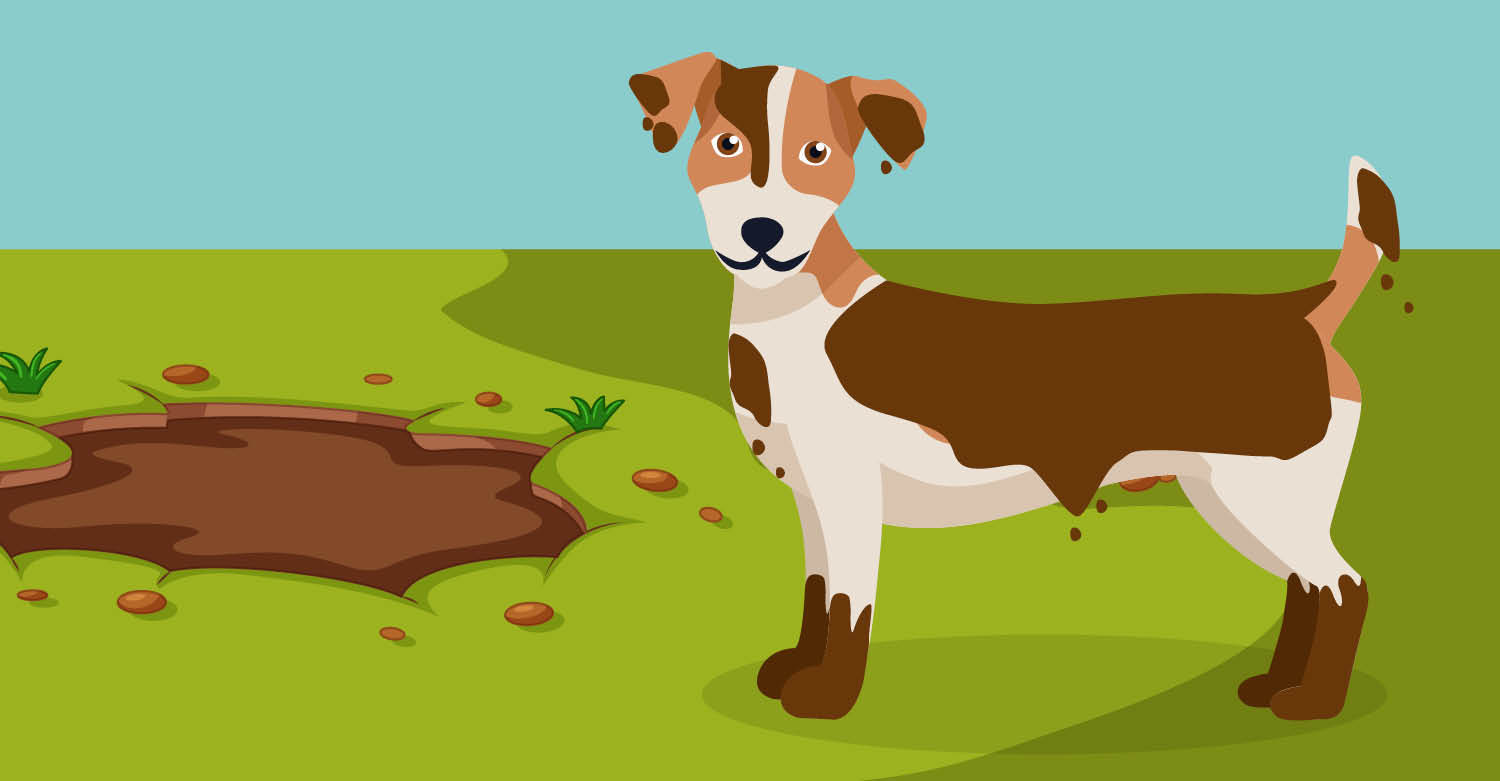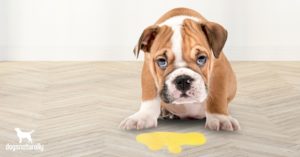Does your dog just love rolling around in the mud? Why not whip up a batch of “mud” that’ll help your dog heal? I’m talking about healing clay for dogs!
Clays is known for it’s many therapeutic healing purposes. Whether white, yellow, brown, green or red in color, all clays have one thing in common … mud. Potent mud.
Humans and animals have been using healing clays as a type of self-care since before history started being recorded. The best thing? It’s easy to reap the benefits of clay to heal and care for yourself and your dog.
How Does Clay Work?
Clay works with the body to correct imbalances through the methods of absorption and adsorption. A clay’s absorption rate is how fast the clay reaches saturation. Its adsorption rate is how well it holds onto or binds with organic and inorganic substances.
These processes vary among different types of clays. The beauty of clay is that chemically, it’s a negatively charged substance. Most toxins are positively charged, so this polarity makes clay irresistible to viruses, harmful bacteria, parasites, gases and various other substances.
What’s most amazing is that clay does this all without harmful side effects …
… but with a ton of natural benefits.
Benefits of healing clay for dogs:
- Eliminate internal parasites, fluids, gases, toxins and heavy metals
- Support a strong immune system by balancing pH levels and supporting healthy intestinal flora
- Help detoxify the digestive tract
Types Of Healing Clays
There are many types of healing clays found throughout the world. These are the most common.
1. Bentonite
Bentonite is a green clay that can vary in mineralization according to where the clay is sourced. It has a high absorption rate and unique chemical structure. What makes bentonite unique is that it’s a clay that has surface particles that are both negatively and positively charged.
Bentonite clay is similar to an ant in that it can carry particles three to four times its size and hold on to them as they travel outside the body.
Here are some of the best bentonite clay uses:
- Relieve digestive issues like constipation, bloating, gas
- Soothe skin and allergy issues
- Help your dog recover from vomiting and diarrhea
[Related] There are more reasons why bentonite clay is good for your dog! Click here to check them out
2. Montmorillonite
Montmorillonite is popularly known as French green clay. This type of clay is perfect to consume internally because it rapidly detoxifies and disinfects the body. Montmorillonite gets its green color from the algae rich dried up sea beds of the Mediterranean.
When hydrated with spring or purified water, montmorillonite binds to toxins and holds them safe so they can be excreted out of the body, making French green clay invaluable for removing blood toxins, bacteria and heavy metals.
Another benefit of montmorillonite is that it has anti-inflammatory properties. It is high in silica and supports the production of fascia and connective tissue to help decongest arthritic and muscular conditions.
3. Illite
Illite is a fine particle, non-expansive green clay known to seek out undesirable microbes and ailing tissues. Rich in sea minerals, it helps support the body’s own healing mechanisms by having the highest adsorption rate. This gives illite the ability to act as a magnet for toxins. It is by far the best choice for detoxification purposes.
[Related] Detoxing your dog is really important. Find out why and how to do it here
4. Redmond Clay
Redmond clay can be used internally and externally. Its high sodium and calcium content make it perfect for drawing out infections and bacteria topically. As a poultice, Redmond clay can be used for joint care, insect bites, stings and any other topical inflammations.
How To Use Healing Clay For Dogs
When you look at the different types of healing clays, you can’t help but notice that each clay is unique in its structure and how it reacts to the body.
Clay also has a wide range of colors, such as red, brown, green, white and blue. White and green clays are used internally while brown, red, yellow and blue clays are used externally. What I love about healing clays is that they can be used with other forms of treatment.
Here are a few guidelines for safe and effective use:
- Never let clay come in contact with metal. Use glass or wooden containers and utensils. Store your clay in glass containers so it will remain sterile and safe for first-aid use.
- Use pure filtered or spring water.
- Treat one issue at a time (this is important).
- Don’t feed your dog for at least two hours after an internal clay treatment.
- Wait at least two hours after your dog ingests clay to give any medications or herbs.
- Clay can be used daily until your dog is healed. If clay treatment doesn’t improve your dog’s condition, discontinue use.
How To Make A Clay Poultice
Poultices are little masses of material, in this case clay, wrapped in clean cotton or muslin.
Ingredients
- 1 lb pure green clay
- 1⁄2 cup cool spring or purified water
- Unbleached cotton or muslin
- Mix clay with enough water to make a thick paste
- Spread a layer of paste with a wooden spoon on to the center of the muslin, about one inch deep and approximately two inches bigger than the area to be treated
- Apply the poultice clay side down and leave it alone until the clay pulls away from the skin. This indicates that the treatment is finished
- Repeat daily until healed
Poultices can be used for cuts, insect bites and stings, bacterial infections of the skin and wounds that won’t heal.
Dry Topical Application Of Clay
Dry application can be used as a disinfectant in treating wounds. Clay can immediately stop bleeding wounds and prevent scab formation. This type of application has been successfully used in the treatment of hot spots, stings, bites, and severe itching.
Mix clay powder and water together and make a dry paste. Apply to bleeding wounds and wounds that need to heal without scabbing. This method can help prevent abscesses and keep a healing wound from itching.

[Related] There are a ton of different natural antibiotics you can use. Find them here
Internal Dosages Of Clay
Internal uses for clay include parasites, deworming, digestive issues, and detoxification. It can also help remove radiation from the body after cancer treatments.
What you’ll need:
- 1 tbsp bentonite, illite, or montmorillonite clay
- 4 oz cool spring or purified water for each tsp of clay 1 oz needleless syringe
- Mix the correct measurement of clay with water as specified above
- Let this slurry stand overnight
- Give to your dog with a syringe or in some wet food the next morning on an empty stomach
- Wait at least two hours to feed full breakfast
- Make sure your dog has access to unlimited fresh water throughout the treatment
Give 1/4 tsp clay for each 20 lbs of weight. This applies to both humans and dogs. Sometimes using clays internally can cause rapid detox, which can result in constipation or diarrhea. If this should occur, ease up on the amount of clay you are using and work your way up to the specified amount.












